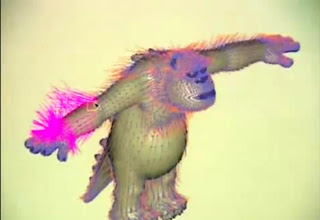Is made up of 4 stages:
Concept Art by Harley Jessup
For the movie Monster Inc.
Concept Art for the movie Wall E created by Daisuke “dice” Tsutsumi
Step 2: models are sculpted
Doc Hudson sculpt from the movie Cars by Jerome Ranft using oil based clay
Manny and Rosie Sculpts for the movie A Bug’s Life by Jerome Ranft made of cast urethane resin
Production
Step: 3: The Sets are Dressed
After the sets are built in 3D, they are dressed with prop models such as chairs, curtains and toys to create a realistic scene.
Step 4: Layout
They have to create a layout to determine the composition and the visual structure of the movie. This is the part where they have to work with the visual camera and virtual sets to figure out how the camera is going to move.
Step 1: Animation
At this point, Layout, dialog, sound, character and models
are already done and the animators should determine
how the characters should move.
Computer controls are used and avars are necessary at
this point.
The animators usually would have to listen to the scratch
voice and determine how to animate the characters –
what are the right gestures and movement for the
characters.
Some animators tries to act it out which makes them look
like silly and they record themselves doing it and study
the movement. But actually they are recording their
movement so that they can apply their movement to
their characters.
The last part that they have to do is to animate the face
and some details like for example fur.
Post-Production
Step 2: Lighting and Shader
The lighting completes the whole picture and at this stage the key, fill
and bounce lights become important in enhancing the mood and
emotion of the characters in the scene.
As for the shaders, it helps to bring out different color effects. The
surface color and texture is determined by the shader. shader in
Maya is like hypershade.
Renderman have it's own shader program but uses it's own
programing language: Renderman Shading Language (RSL).
























Production of any film is difficult must have learn from some one before start any big project
ReplyDelete